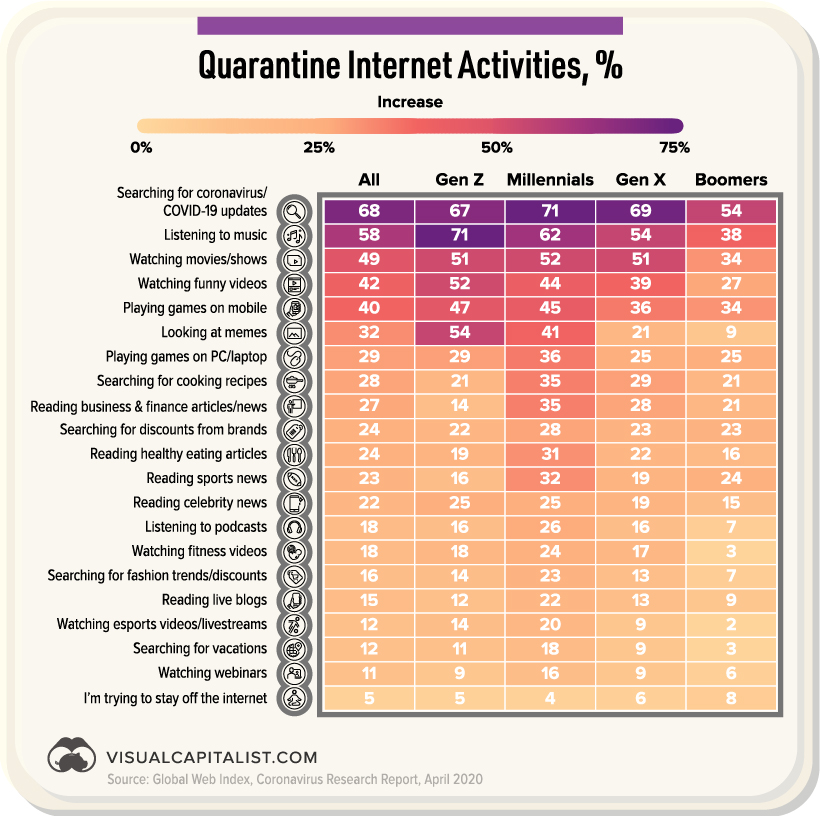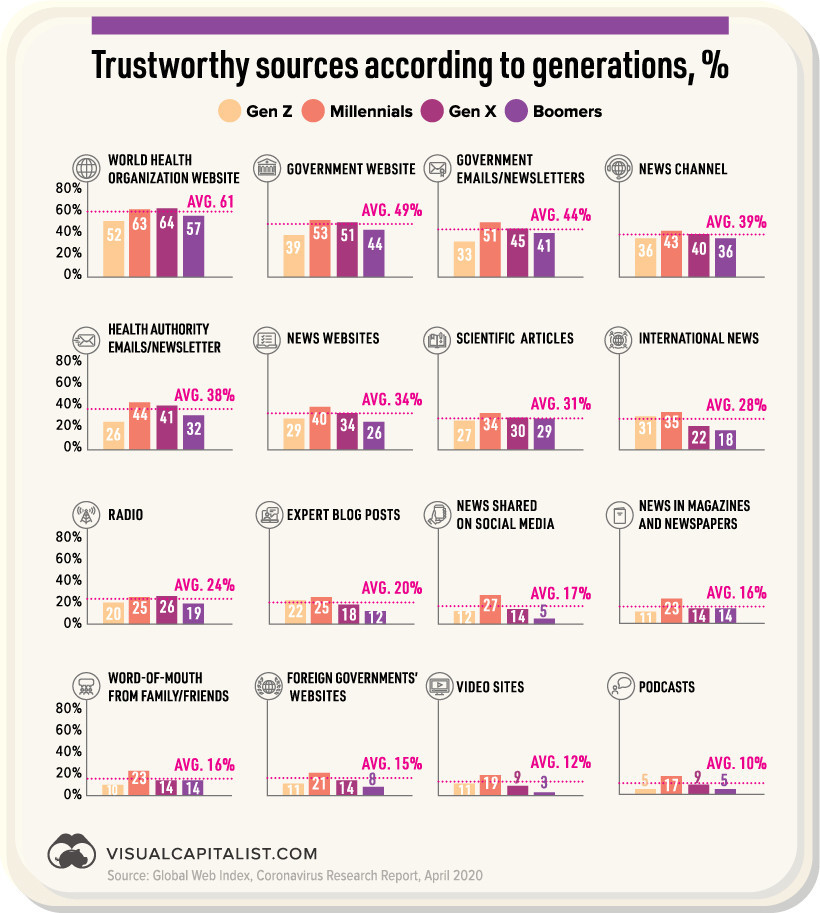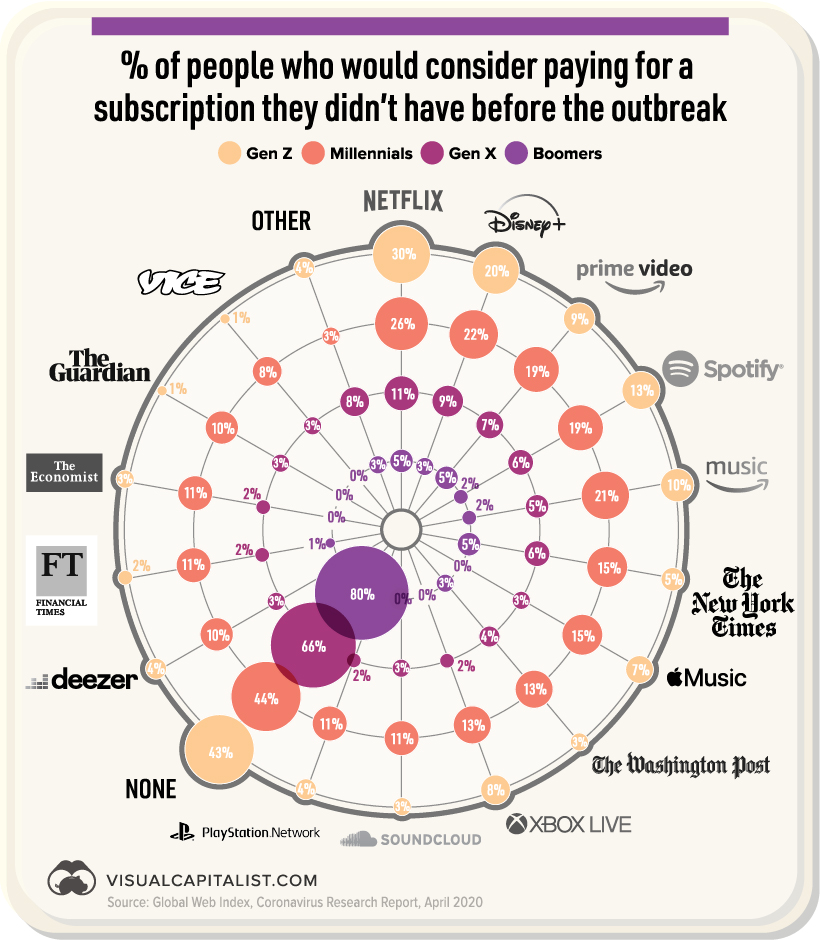Generation Gap: How the Coronavirus changed media consumption and trust
The coronavirus outbreak has given us some time to really dive into the opportunity of digital platforms. Shops and malls were closed. Live events moved into Zoom, Microsoft Teams, Google Duo, Webex conferences. And, many of us searched for quite tones in some music streaming platform. In this period of social distancing and confused news spread, people consume incredible amounts of media – be it video, text, pictures, music or TV. The generation gap is quite impressive, when wee look at some study by the Global Web Index.

Global Web Index shows that 80% of consumers in the U.S. and UK consume more content since the pandemic outbreak. One things all generations and genders have in common: Broadcast TV and online videos (YouTube, TikTok) were the primary media sources. Furthermore, 68% of the 4.000 respondents preferred online news against any other news option.
Global Web Index gives us some insights into how different generations use media. It illustrates which impact the outbreak had on our media consumption. Whether it is correct to stereotype generations or not, GenZ, GenY, GenX to Boomers use media platforms in a complete different way.

Generations are very different in media usage though. Gen Z is more active listening to music than to news spreads. However, Gen X is more playful, mainly on mobiles and computers, they also tend to be self-organizing their lives when finding cooking recipes and healthy eating tipps. Still, what has massively changed in our lives is the way we trust others. Although, there is much noise around the World Health Organization (WHO), this organization is still seen as the most trusted source of information for any COVID-19 related updates. However, there are regional differences: The UK trust more in their government as the most trusted news source. Funnily enough, people trust more ein social media sources on information updates than their own family, friends or foreign government sites.

The study also shows that in times of uncertainty, the interest in new subscription rises. Obviously, people have got more time to watch films and inform themselves via new sources they have not used in the past. Whether, it is to understand the pandemic chaos better or to update themselves on content they have missed out in the past.

The only thing we wonder is, how can people consume more paid media when jobs and industries crack down? But maybe the economy is up and running soon. Then media consumption might change again completely.



